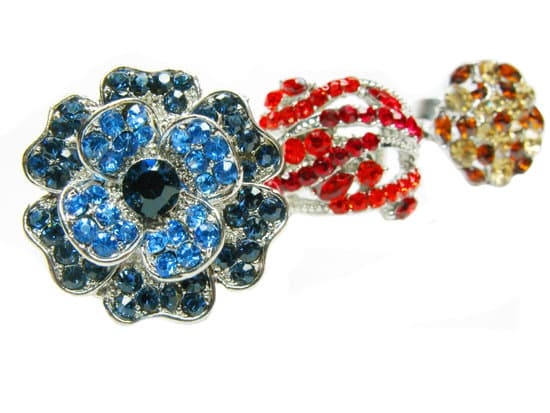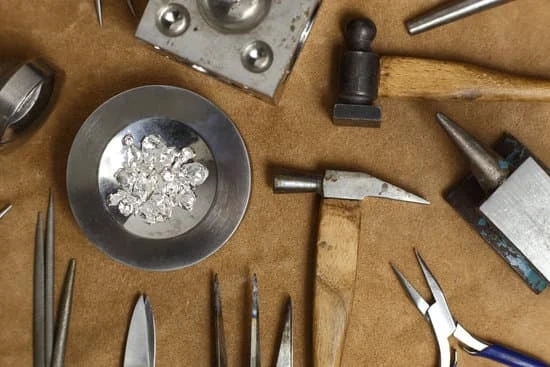London’s jewelry district has a rich and storied history that dates back centuries, making it a significant part of the city’s heritage. From its early beginnings to the present day, this district has played a pivotal role in shaping London’s reputation as a hub for exquisite jewelry craftsmanship and trade.
The origins and development of London’s Jewelry District are deeply intertwined with the city’s evolution over time. As one of the oldest and most prestigious jewelry districts in the world, it has witnessed significant changes and transformations, making it a fascinating subject for exploration and study.
In this article, we will delve into the history of London’s Jewelry District, tracing its roots from the early beginnings to its modern-day resurgence. We will examine notable landmarks, historical sites, famous jewelers, the influence of royalty and the aristocracy, as well as the impact of the Industrial Revolution on this iconic district. Join us on a journey through time as we uncover the captivating story of London’s Jewelry District.
The Early Beginnings
The history of London’s jewelry district dates back to the medieval times when skilled craftsmen and artisans began congregating in a specific area within the city. The jewelry district, also known as Hatton Garden, has a rich and storied past that is closely intertwined with London’s history as a center for gemstones, precious metals, and fine craftsmanship.
The area has continuously developed over the centuries, evolving into the renowned hub for jewelry, diamonds, and gemstones that it is today.
During the 15th century, Hatton Garden became synonymous with jewelry making and trading. The area attracted goldsmiths, silversmiths, jewelers, and other artisans who set up workshops and businesses in the district. As demand for jewelry grew among the nobility and wealthy classes, the Hatton Garden became increasingly populated with skilled craftsmen catering to their tastes.
One of the most significant milestones in the development of London’s jewelry district was during the 17th century when Sir Christopher Hatton acquired land in the area. His name became associated with the district as it continued to flourish as an epicenter for all things related to jewelry making and trade.
The careful craftsmanship and attention to detail displayed by artisans in Hatton Garden earned them a reputation for producing some of the finest jewelry pieces in Europe. This reputation attracted patrons from far and wide, further cementing the district’s status as a premier destination for exquisite jewels and expert craftsmanship.
The history of London’s jewelry district is testament to its enduring legacy as a center for creativity, innovation, and exceptional artistry within the realm of jewelry making. From its early beginnings rooted in medieval craft traditions to its prominence as a global leader in contemporary designs, Hatton Garden continues to be a vibrant symbol of London’s enduring influence on the world of fine jewelry.
Notable Landmarks and Historical Sites in the Jewelry District
London’s Jewelry District is rich in history and has been home to many notable landmarks and historical sites that have played a significant role in shaping the district. Here are some of the most important sites to visit when exploring the history of London’s jewelry district:
- Hatton Garden: This iconic street is at the heart of London’s Jewelry District and has been a center for jewelry trade since the medieval period. Today, it is home to numerous jewelry shops, workshops, and businesses, making it a must-visit destination for anyone interested in the history of jewelry in London.
- The Goldsmiths’ Company: Established in 1327, The Goldsmiths’ Company is one of the twelve great livery companies of London and has been instrumental in regulating the gold and silversmith industries. The company’s headquarters, Goldsmiths’ Hall, is a stunning example of London architecture and serves as a living testament to the district’s enduring legacy.
- Cartier Building: Located on New Bond Street, the Cartier Building is a prime example of the opulent architectural style associated with luxury jewelers. The building has stood as a symbol of luxury and prestige in London’s Jewelry District for over a century.
Exploring these landmarks offers visitors insight into not only the craftsmanship and artistry that have defined London’s jewelry industry but also its enduring legacy that continues to thrive today. These sites serve as vital links to understanding how this historic district became one of the world’s most renowned centers for fine jewelry and craftsmanship.
The Impact of the Industrial Revolution on London’s Jewelry Industry
The Industrial Revolution had a profound impact on London’s jewelry industry, transforming it from a small-scale craft to a thriving and influential hub of innovation and production. This period marked a significant shift in the way jewelry was made, bought, and worn, shaping the district into what it is today.
The Rise of Mass Production
One of the most significant effects of the Industrial Revolution on London’s jewelry industry was the rise of mass production. With the introduction of new machinery and techniques, jewelers were able to produce larger quantities of jewelry at a much faster rate than ever before. This not only increased the availability of jewelry to a wider market but also allowed for more affordable options, making luxury items more accessible to the middle class.
Technological Advances in Jewelry Making
The Industrial Revolution also brought about technological advances in jewelry making. Innovations such as steam-powered machinery and new metalworking techniques revolutionized the way jewelers crafted their pieces. This led to the creation of intricate designs and intricate patterns that were previously impossible to achieve by hand. As a result, London’s Jewelry District became known for its cutting-edge technology and skilled craftsmanship.
Shift in Design Aesthetics
Furthermore, the Industrial Revolution brought about changes in design aesthetics within London’s Jewelry District. The newfound ability to mass-produce jewelry meant that there was a greater demand for unique and eye-catching designs. Jewelers began incorporating new materials and styles into their pieces, reflecting the changing tastes and preferences of consumers during this time. As a result, London’s Jewelry District became synonymous with bold and innovative design, setting itself apart from other jewelry hubs around the world.
Famous Jewelers and Their Contributions to the District’s History
London’s Jewelry District has a rich and storied history, with many famous jewelers leaving their mark on the area. These iconic figures have made significant contributions to the development and reputation of the district, cementing its status as a global hub for exquisite craftsmanship and luxury jewelry.
Renowned Jewelers
Throughout history, London’s Jewelry District has been home to an array of renowned jewelers who have shaped the industry. Names like Thomas Heming, Robert Garrard, and Charles Lewis Tiffany are just a few examples of visionary artisans who established prestigious jewelry houses in the district. Their dedication to innovation, quality, and timeless design has left an indelible mark on the world of jewelry.
Innovations and Techniques
The contributions of famous jewelers to London’s Jewelry District go beyond mere brand recognition. Many of these craftsmen were pioneers in developing new techniques and introducing innovative designs that set trends across the globe. From the introduction of new gem-setting methods to iconic jewelry styles that became synonymous with luxury and elegance, these trailblazers have continually pushed the boundaries of traditional craftsmanship.
Luxury Legacy
The legacy of famous jewelers in London’s Jewelry District is one of luxury and opulence. Their commitment to unparalleled quality and uncompromising standards has helped establish the district as a premiere destination for discerning connoisseurs seeking exceptional jewelry pieces. The influence of these legendary jewelers can still be felt today, as their heritage brands continue to thrive and inspire future generations of craftsmen within the district.
The Influence of Royalty and the Aristocracy on London’s Jewelry District
The history of London’s jewelry district is deeply intertwined with the influence of royalty and the aristocracy. Throughout the centuries, the elite members of society have played a significant role in shaping the development and reputation of this renowned hub for jewelry craftsmanship and trade.
The connection between London’s jewelry district and royalty dates back to medieval times when monarchs and nobles were among the primary patrons of exquisite jewels and precious metals. The demand for opulent adornments from the upper echelons of society fueled the growth of skilled artisans and craftsmen in the area, establishing it as a center for luxury jewelry production.
Notable Landmarks and Historical Sites in the Jewelry District
- Hatton Garden: This iconic location has been a hub for jewelers since the medieval period, with a long-standing reputation for housing some of the most prestigious jewelry businesses in London.
- Goldsmiths’ Hall: The headquarters of The Worshipful Company of Goldsmiths, one of the livery companies of the City of London, has been instrumental in upholding standards of excellence in jewelry craftsmanship since its establishment in 1327.
- Garrard & Co: Known as “the oldest jewelers in the world,” Garrard has a storied history as a supplier to the British royal family, with a legacy that spans over three centuries.
The legacy of London’s jewelry district is not only one of exceptional craftsmanship but also one deeply rooted in its association with royalty and nobility. Even today, these historical influences continue to shape its character and allure.
The Resurgence of London’s Jewelry District in the Modern Era
The history of London’s jewelry district is a rich tapestry of tradition, innovation, and resilience. After facing challenges brought about by industrialization and economic downturns, the modern era has seen a resurgence in the prominence and influence of London’s Jewelry District. This revitalization can be attributed to several factors, including shifts in consumer preferences, advancements in technology, and a renewed appreciation for artisanal craftsmanship.
One significant development in the modern era has been the increasing focus on sustainable and ethically sourced materials within the jewelry industry. With growing awareness of environmental and social issues, both consumers and industry professionals are placing greater emphasis on responsible sourcing practices.
As a result, many jewelers in London’s Jewelry District have embraced this movement, championing eco-friendly initiatives and transparency in their supply chains. This shift towards sustainability not only reflects changing consumer values but also positions London’s Jewelry District as a global leader in ethical jewelry production.
Moreover, technological advancements have played a pivotal role in the resurgence of London’s Jewelry District. From innovative design software to state-of-the-art manufacturing techniques, technology has empowered jewelers to create stunning pieces with unprecedented precision and efficiency.
Additionally, e-commerce platforms have expanded the reach of London’s jewellers, allowing them to connect with customers around the world. This digital transformation has breathed new life into the district, enabling traditional craftsmanship to thrive in an increasingly interconnected global marketplace.
Furthermore, collaborations between contemporary designers and heritage brands have injected fresh perspectives into London’s Jewelry District. By bridging the gap between tradition and modernity, these partnerships have reinvigorated the district with bold designs that pay homage to its illustrious past while embracing the spirit of innovation. Through these collaborations, London’s jewelry industry continues to evolve and captivate audiences with its timeless allure.
| Development | Impact |
|---|---|
| Sustainable Sourcing Practices | Positioned London as a leader in ethical jewelry production. |
| Technological Advancements | Empowered jewelers to create precise pieces efficiently. |
| Collaborations between Designers & Heritage Brands | Bridged tradition & modernity; injected fresh perspectives into jewelry district. |
The Future of London’s Jewelry District
London’s Jewelry District has a rich and fascinating history that dates back centuries. From its early beginnings to its impact on the modern era, the district has seen significant changes and developments over the years. As we look towards the future, there are several trends and developments to watch out for in London’s Jewelry District.
One of the major trends to keep an eye on is the growing emphasis on sustainability and ethical practices within the jewelry industry. In recent years, there has been increased awareness and demand for ethically sourced gemstones and metals, as well as environmentally friendly production methods. This shift towards sustainability is likely to have a significant impact on London’s Jewelry District, with many jewelers adapting their practices to meet these new consumer demands.
Another trend that is expected to shape the future of London’s Jewelry District is the rise of technology in jewelry design and production. Advancements in 3D printing, CAD software, and other technological tools have revolutionized the way jewelry is created, allowing for more intricate designs and customization options. This merging of traditional craftsmanship with modern technology will continue to redefine the landscape of the district.
Furthermore, as global luxury markets continue to evolve, London’s Jewelry District is likely to see an influx of international buyers and investors. The district’s reputation for exquisite craftsmanship and timeless designs makes it a magnet for affluent consumers from around the world. This growing international presence will bring new opportunities for collaboration and innovation within the district.
In summary, the future of London’s Jewelry District is poised for exciting changes and advancements. From sustainability initiatives to technological innovations and global influences, there are many trends and developments that will shape the district in the coming years.
| Trend/Development | Impact |
|---|---|
| Sustainability/Ethical Practices | Adaptation of production methods to meet consumer demand |
| Technology in Jewelry Design | Redefining traditional craftsmanship with modern tools |
| Global Influence | Influx of international buyers bringing new opportunities for collaboration |
Conclusion
In conclusion, the history of London’s jewelry district is a rich tapestry that spans centuries, from its early beginnings to the modern era. The district has played a significant role in shaping the jewelry industry not only in London but also on a global scale. The legacy of the district continues to be felt in the craftsmanship, creativity, and innovation that have defined it for generations.
The impact of the Industrial Revolution brought about significant changes to the jewelry industry in London’s Jewelry District, bringing both challenges and opportunities for growth and development. Notable landmarks and historical sites within the district serve as reminders of its storied past, captivating visitors with their timeless beauty and historical significance.
Looking towards the future, trends and developments within London’s jewelry district are sure to continue evolving, reflecting changing consumer preferences and technological advancements. Despite these changes, the district’s enduring legacy as a center of excellence in jewelry craftsmanship will undoubtedly continue to inspire and captivate both industry professionals and enthusiasts alike for many years to come.
Frequently Asked Questions
What Is the Famous Jewellery Street in London?
The famous jewelry street in London is Hatton Garden, located in the Holborn district of the city. This area has been a center for jewelry trade and craftsmanship since the 19th century.
What Is the Diamond District in London Called?
The Diamond District in London is also known as Hatton Garden. It is known for its high concentration of diamond and jewelry businesses, making it a popular destination for those looking to buy or sell precious stones and metals.
Which Garden Is Famous London Site for Jewelry?
One of the most famous London sites for jewelry is the Victoria and Albert Museum, which houses an extensive collection of jewelry from various time periods and cultures. Visitors can appreciate stunning pieces from different eras and learn about the artistry behind them.

Welcome to my jewelry blog! My name is Sarah and I am the owner of this blog.
I love making jewelry and sharing my creations with others.
So whether you’re someone who loves wearing jewelry yourself or simply enjoys learning about it, be sure to check out my blog for insightful posts on everything related to this exciting topic!





